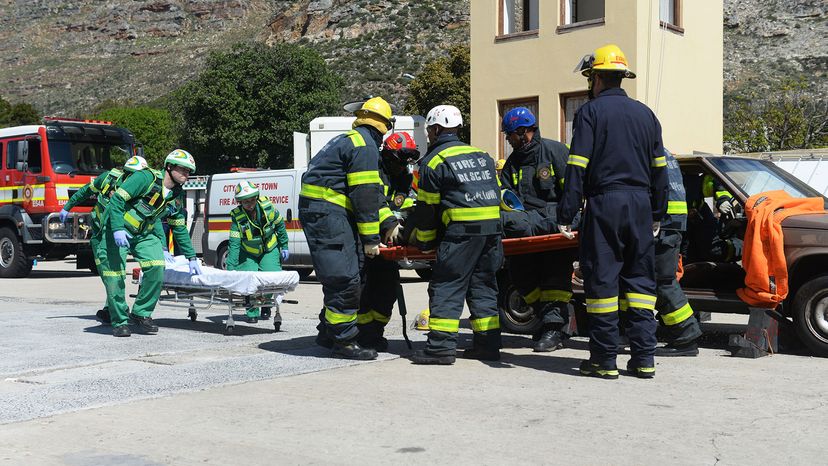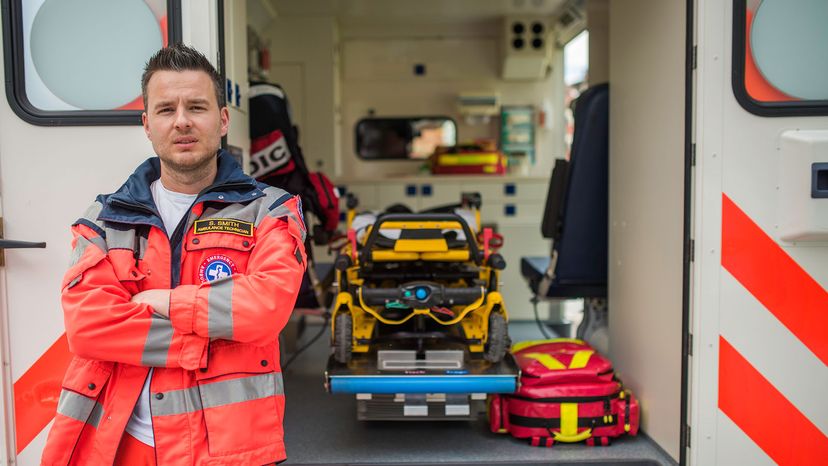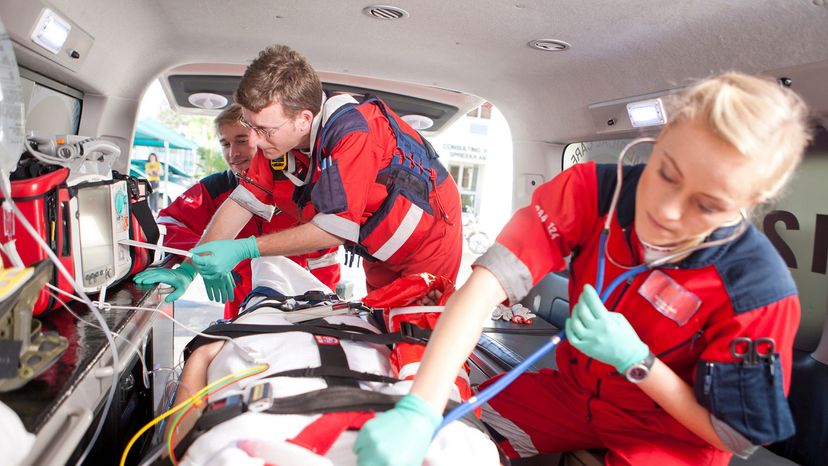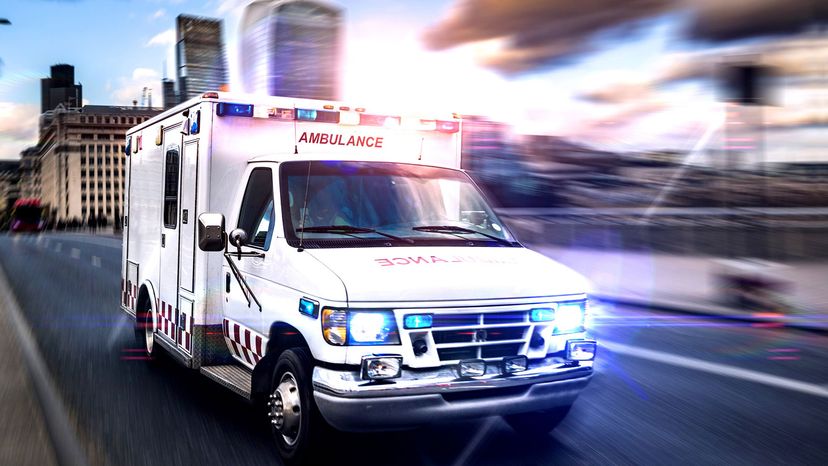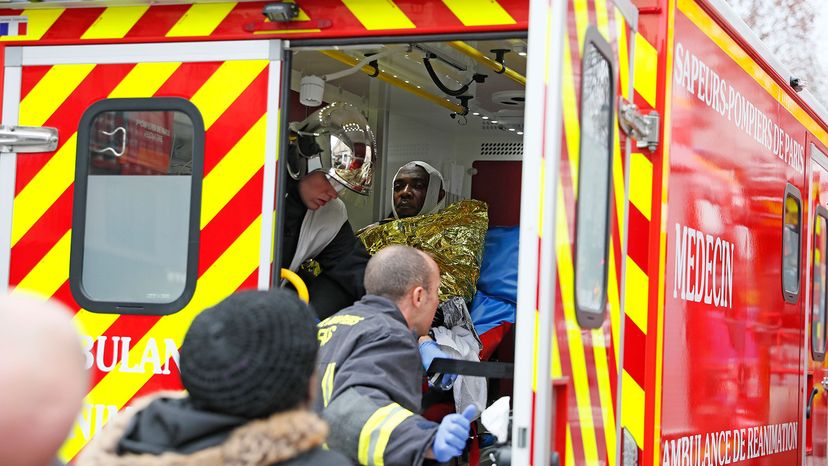
They roar down the streets, their sirens blaring and lights flashing as they arrive on the scene of some emergency. And those in need are so relieved to see them coming.
We're of course talking about ambulances, those vehicles equipped for providing care to sick or injured people and transporting them to and from the hospital [source: Pollock]. For people in medical distress — heart attack and stroke victims, people with gunshot wounds, survivors of car crashes, drug overdoses and scores of other scary situations — these emergency vehicles and their skilled crews who rush to the rescue can sometimes mean the difference between life and death.
Advertisement
In Atlanta, for example, an emergency medical technician (EMT) on an ambulance crew told The New York Times about being sent on an emergency call to a local skate park, where a teenager had suffered a seizure. In route, the dispatcher alerted the crew that the patient's heart had stopped. When they got to the scene, they took over from a bystander who was performing CPR, and gave the young man's heart repeated shocks with a defibrillator, until his heart restarted. Two days later, as the EMT explained, he visited the hospital and shook the hand of the patient, who not only survived his brush with death, but also made a full recovery — all because of the timely care he had received [source: Olsen].
Across the U.S. emergency medical services (EMS) systems are out there helping people and sometimes saving lives. According to a survey conducted by the National Association of State EMS Officials back in the early 2010s, there are more than 78,000 EMS vehicles in the U.S., and they're staffed by more than 826,000 emergency medical technicians and paramedics [source: McCallion].
In this article, we'll look at the history of the ambulance, how the vehicles are equipped and what sort of professionals staff them, as well as how the 911 system that dispatches ambulances works. We'll also look at problems within the EMS field, such as the surprisingly hefty bills that some patients get, and how ambulance and emergency care is evolving thanks to technological innovations.
Advertisement

